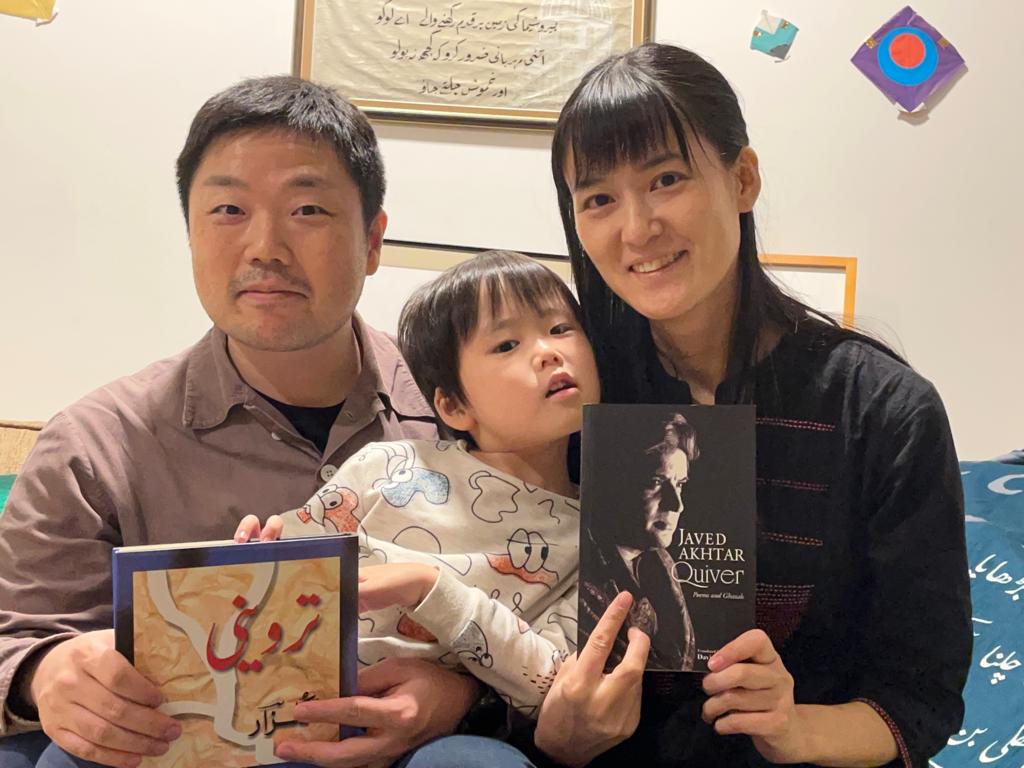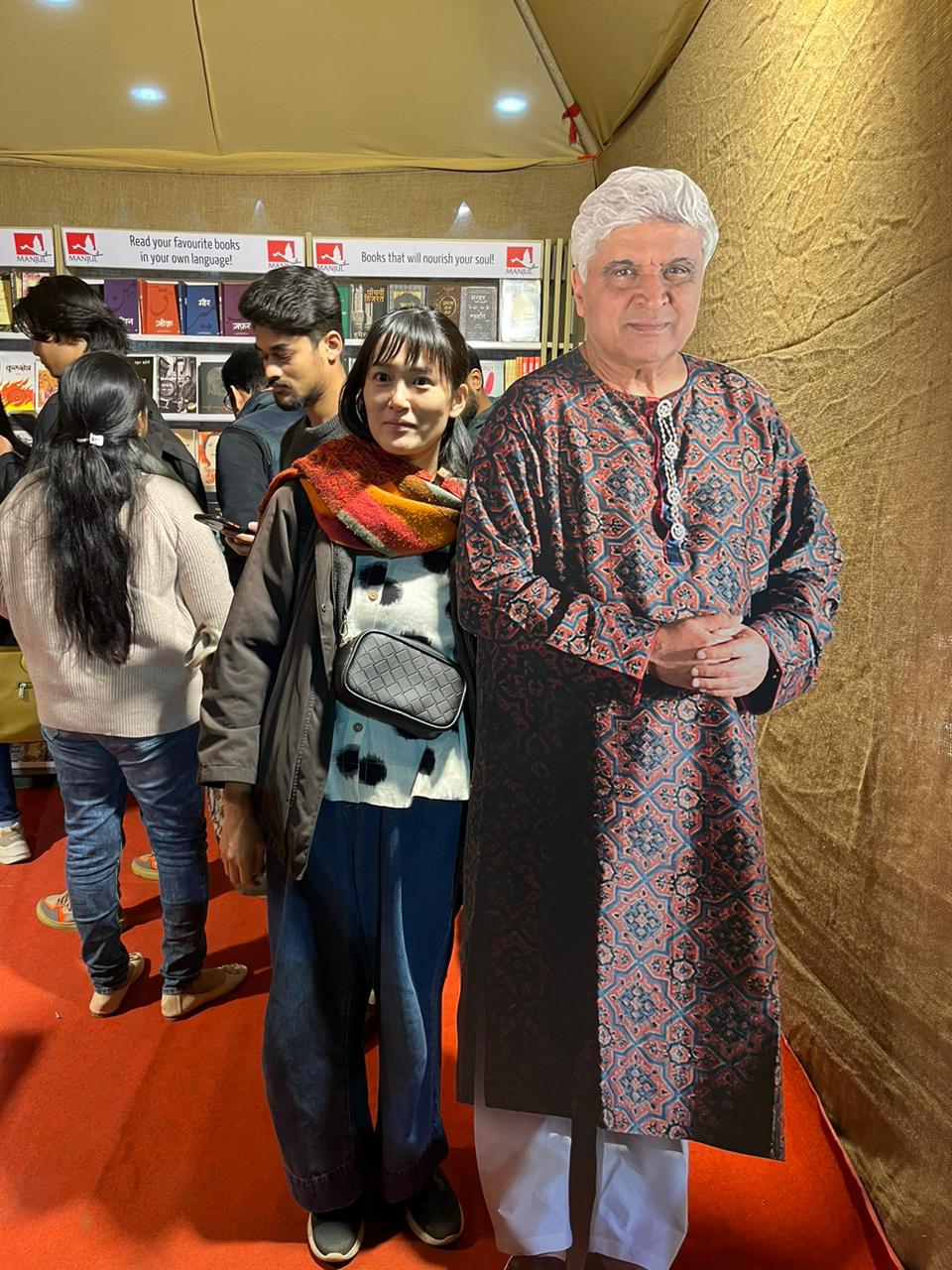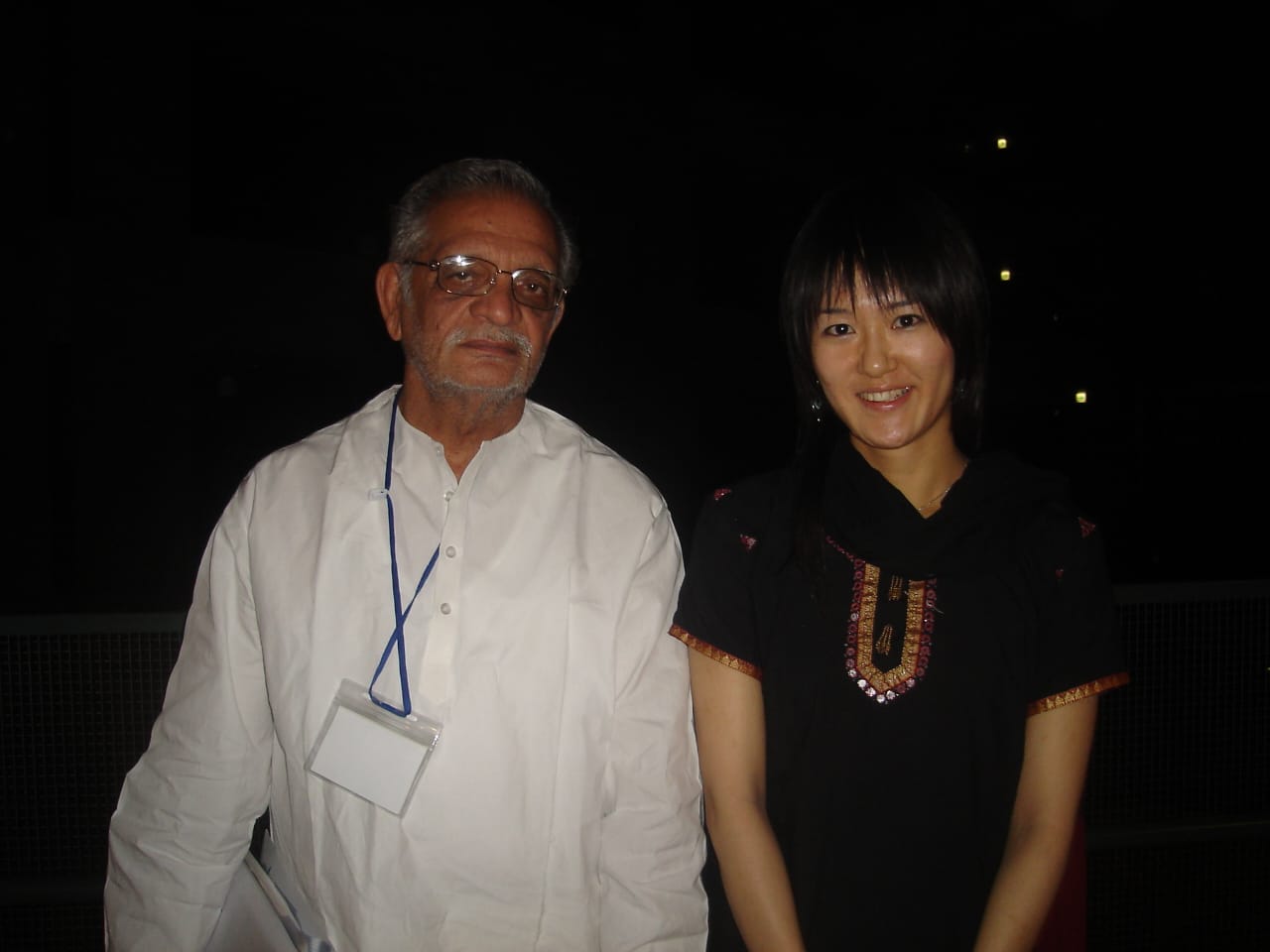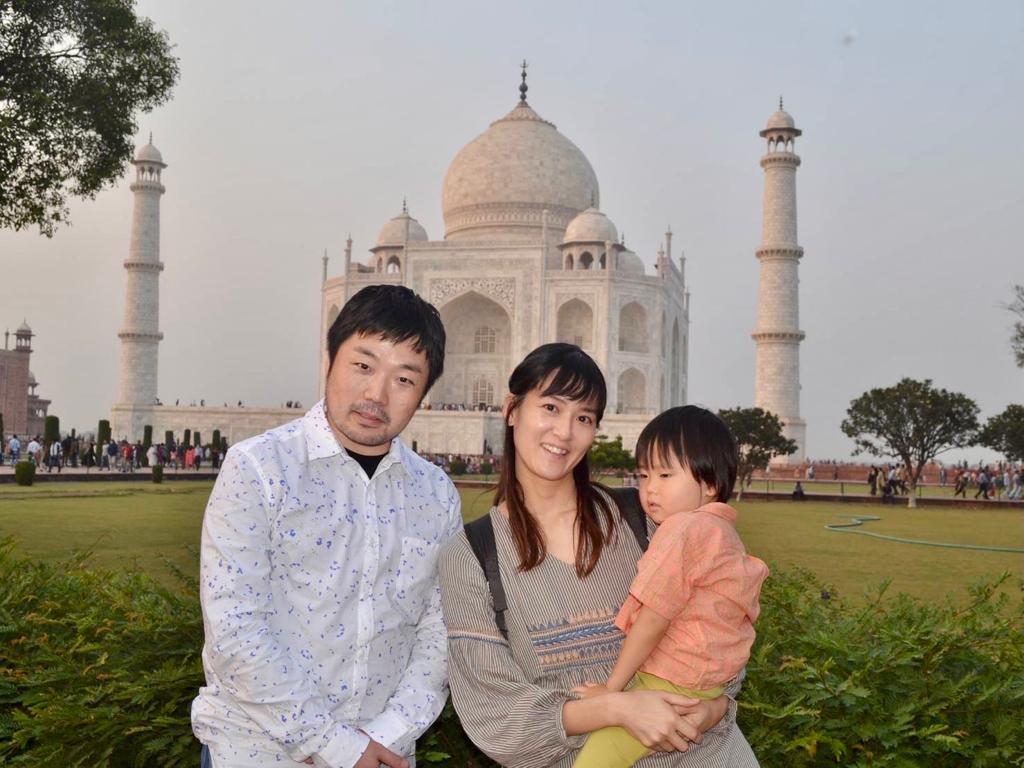Tripti Nath/New Delhi
This is an extraordianary love story of the kind found in fables. What makes it distinctly different is that was stimulated by Urdu and continues to be centred around this beautiful language. Yuko Takaji, a Japanese calligrapher, revised Urdu lessons with her journalist husband Shoichiro Takaji at the recent Jashn-e-Rekhta, Urdu literary festival, in the national capital here. The festival rekindled their love for Urdu, a language that forged their friendship and united them in matrimony.
It is rare for the Japanese to learn Urdu. The Takajis were perhaps the only Japanese in the huge crowd at the Urdu festival but they made the most of their presence by listening to the Qawwali, enjoying Urdu couplets printed on rectangular boards at vantage points at the festival venue, and buying Urdu books. It helped them reconnect with the beautiful language and convinced them that the festival fosters inter-faith unity.
This Delhi-based couple learnt Urdu more than two decades back in the Urdu department of the Tokyo University of Foreign Studies but they continue to be fascinated by language. Both have an impressive Hindustani vocabulary which is not surprising coming from the perfection-seeking Japanese. While Yuko in her late 30s is from central Japan and studied Urdu for five years, her husband who is in his early 40s was a batch senior to her at the Japanese government-run university. He studied Urdu for four years. Shoichiro is from western Japan. Both chose to learn Urdu around 2002 after finishing High School.
“We have experienced many things- thanks to Urdu,’’ says Shoichiro. While Shoichro acknowledges that he fell in love with Yoko at the university, she agrees that Urdu created a family for them. Caressing her four-year-old son Hayato,, she says, “Iska naam bhi maine Urdu se rakha hai. In Arabic, Hayat means ‘Zindagi’.

The Takajis with their son, Hayato, show the books they bought recently at Jashn-e-Rekhta
Destiny brought them back together when they ran into each other in Paharganj in Delhi in 2003.
Their ability to speak fluently and even write Urdu is impressive. Not only do they speak Hindustani confidently, but they also have a rich vocabulary. But like most modest Japanese, they say that they can only speak ‘thodi thodi’ Hindustani.'
Three minutes into our conversation in English in a south Delhi coffee shop over Cappuccino and cake, Yuko sprung a surprise by suggesting that she can talk in Urdu. “Mai Urdu me baat kar sakti hun. Mujhe bees saal se ab tak Urdu se bahut mohabbat hai.” (I can talk in Urdu. I have been in love with Urdu for 20 years.)
Yuko looked happy managing the Delhi winter with a green shawl which had a nazm by Iqbal Ashhar printed as design. She recited the first two lines printed on the shawl, “Urdu hai mera naam main Khusrav ki paheli. Main ‘mir’ ki hamraz huun ‘ ghalib’ ki saheli.’
Yuko went on to explain that a radio programme by Honda Koichi, a famous calligrapher inspired her to learn Urdu. “Itefaaq se maine voh radio programme suna. Mujhe Arabic ke character me aur calligraphy me bahut dilchaspi hui. Yeh Japanese character se bahut farak hai. University me daakhil hone se pehle mujhe Arabaic zubaan ke baare me pata chala.(I happened to listen to that radio programme. I found the Arabic character and caligraphy very interesting as it is very different from the Japanese character. It was only before enrolling in the university that I came to know about the Arabic language.’’

Yuko poses with a cut-out of Javed Akhtar, during Jashn-e-Rekhta
Her phone screensaver has Arabic calligraphy. She learnt calligraphy in her childhood.
Yuko who also worked part-time in NHK Urdu, many years back, recalls that her ‘Ustaad’ gave her 80 percent marks in the university in the first year. “Test bahut aasaan tha.” (The test was very simple).
While pursuing an Urdu language course at a university in Japan, Yuko and her classmates were asked to write an essay. “We could opt for one of the two themes- Hinduism or Pakistan. The other alternative offered by our teacher was to make a video. I did not write the essay. Instead, I chose to make a 30-minute video on the theme, ‘Beatles kyun Hindustan aaye.’ I used the official Beatles video explaining their reason for coming to India. I wrote the script.’’
Shoichiro, who is the bureau chief of Kyodo, a Japanese news agency, in India, also speaks Hindustani. “I studied Urdu for four years. At that time, Arabic, Persian, Turkish, and Urdu were being taught in the university but I decided to learn Urdu. Yuko was my junior by a year. When I joined, our class had 17 Japanese students. We were reading articles on BBC Urdu in class.’’
Likewise, Yuko’s batch of Urdu learners too had almost equal strength.

Yuko shared her picture with poet and lyricist Gulzar during his viist to her university in Tokyo in May, 2007
Shoichiro had different reasons for studying Urdu. “I am interested in Indian culture. Before I got admission to the university, 9/11 ( the terrorist attack on the twin towers in the United States in 2001) happened. I was to join the Hindi department but 9/11 made me change my mind. I decided to learn Urdu as I was convinced that knowing the language would help me understand India, Pakistan, and terrorism.
"It is certain that by learning the language, we can understand culture and society. As a journalist, I have found that Urdu has been a very useful tool in comprehending issues and understanding the way people think but unfortunately, I have not been able to serve as Bureau Chief in Islamabad. I have been to Pakistan two times more than a decade back.’’
Shoichiro has also downloaded an App on his phone to learn Devanagari. Yuko uses it to learn English.
Yuko still remembers the home page of the Urdu department which had a ‘sher’ (couplet) that read,”Urdu hai jiska naam, hum hi jaante hain daag, Saare Jahan me dhoom hamari zubaan ki hai’
She says, “Isko dekh kar mujhe bahut josh aaya.’’ (I was very excited when I read this.’’)
Memories of Urdu-related activities from her university days are still fresh in her mind. “When I was a student, our Japanese ‘Ustaad’, Yutaka Asada created a group of all students in our class to present the Urdu adaptation of a Japanese play on the story of Hiroshima. In the 90-minute play, I played the role of a painter who survived the bombing, with a hand injury.’’

The Takajis with their son at the Taj Mahal
The play was initially staged during our university festival in Tokyo in 2005 and was well received. Encouraged by the overwhelming response, the Japanese government facilitated the staging of the play in many cities in India and Pakistan.
From 2005 to 2007, this play titled, ‘Hiroshima ki Kahani’, was staged in the university and in many cities in India including Bhopal, Bengaluru, Chandigarh, Delhi, Lucknow, Mohali, and Mumbai. The university partially paid for the travel and it was a very good experience. In 2006, the play was also staged in Islamabad, Lahore, and Karachi.
Yuko who spent 12 hours at the Jashne-e-Rekhta over three days, says that she is determined to teach Urdu to Hayato.
Were it not for the huge crowd, Yoko, Shoichiro and Hayato would have liked to attend Qawaali and Sufi music.
Both have an ear for music and have enjoyed listening to the rich voice of the late Pakistani singer Nusrat Fateh Ali Khan.
The couple visited Jashn-e-Rekhta for the first time, Yuko says that although not every visitor to Jashn-e-Rekhta could comprehend Urdu they enjoyed reciting couplets and attending the soul-stirring Qawaali. “Maine Jashne-e-Rekhta bahut enjoy kiya hai.’’ (I enjoyed Jashn-e-Rekhta.
At the festival, Yuko bought books by noted lyricists and poets Gulzar and Javed Akhtar. She also posed with a cut-out of Akhtar. “Gulzar is my favourite poet. I had a chance to meet him in May, 2007 when he came to our university for an international symposium on contemporary Indian literature."
The couple also enjoyed having Tandoor Ki chai, Daulat ki chaat but what they relished the most was Moonglet, a fluffy variation of a lentil pancake commonly known as ‘Chila’ made in north India.
Voicing concern over the future of Urdu, Shoichiro says, “ Urdu is in a very difficult situation now. In Japan, some universities are offering courses in Urdu language but it is rare for Japanese to learn Urdu. There is very little knowledge about Urdu in Japanese society.’’
ALSO READ: How Salman Khan inspired Gulfam to become para powerlifter
The couple has been in India for a year and a half and has visited many states. “ We chose Agra for our honeymoon. That was the reason we chose to revisit the Taj Mahal last November with our son, nearly ten years after our honeymoon. We liked visiting Hyderabad and are going there again around Christmas. ‘’
Ghalib ki Haveli in Delhi is also on their list of must-see places.
